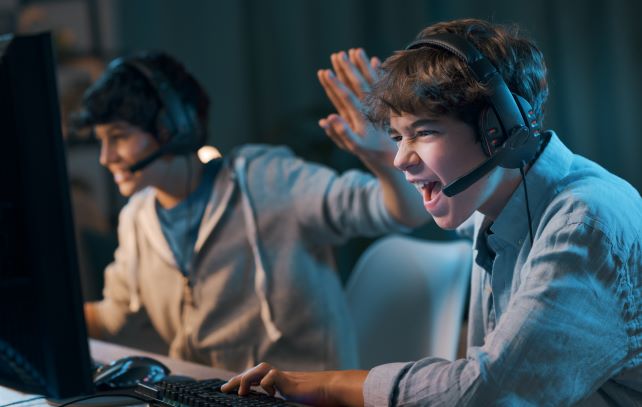By Clare Mellor
Love it or hate it, students will have to write in their English Language exams. So how can we encourage them to practise and to feel like their writing is valued and purposeful?
Make writing real
It might seem obvious, but I think students feel more inclined to write if they know somebody is going to read it (even if that ‘somebody’ is their teacher). We often talk to students about audience and purpose, but what if we can make those things authentic for them? Making their writing real can engage students and encourage them to want to write.
Here are a few ideas for how you could do that:
• Students could write articles to send to the local newspaper or letters to their MP presenting their views on an issue that affects the local area.
• Alternatively, if there is an issue in school that piques their interest – perhaps the homework policy or how students are rewarded for doing well – students could write speeches or letters to the headteacher or Chair of Governors expressing their point of view.
• You could even hold a writing competition across the year group, linking the topic to an issue relevant to your students, with the winning pieces being published on the school website.

Quick-fire planning practice
One of the challenges of writing in the exam is coming up with ideas quickly. With this in mind, you could spend some time practising planning techniques with your class (such as quick bullet point lists or mind mapping). Practise planning in timed conditions. The questions used for these planning activities will then give students a bank of questions they can use for revision and timed writing practice. You could use statements such as the ones below, as well as past exam questions.
• ‘There is too much money in football. It is not fair that players get paid such high wages when most of their fans do not.’
Write an article for a newspaper in which you explain your point of view on this statement.
• ‘We should lower the voting age to 16. Young people’s voices need to be heard.’
Write an article for a newspaper arguing your point of view on this statement.
Developing content for extended responses
As well as planning, students need to practise developing their ideas and producing extended writing. Below are some suggestions that might help them to do this.
1. ‘Exams should be abolished. Students can be assessed by their teachers instead.’
Write an article for a newspaper in which you explain your point of view on this statement.
This is an issue that is particularly relevant to students today, who have missed so much time in school over the past two years and have seen exams cancelled for their peers.
You could begin by organising a class debate.
Divide the class in two and assign each half a viewpoint: either for or against the statement.
Working in pairs or small groups, students should come up with some arguments in support of their given point of view. If needed, you could model some ideas on the board (see below). Encourage students to come up with four or five key arguments in support of their viewpoint.
|
FOR
I agree. Exams should be abolished. Students can be assessed by their teachers instead.
|
AGAINST
I disagree. We should keep exams. Students should not be assessed by their teachers.
|
| Teacher assessment causes less stress and anxiety for students. |
Exams are fairer. Everyone is assessed in the same way. |
Before beginning the debate, revise some of the persuasive and rhetorical devices students should be familiar with.
You could play ‘rhetorical bingo’. Get students to create a table in their books like the one below. Give students a list of rhetorical and persuasive devices from which they can choose any nine to insert into their table. The rhetorical devices can be differentiated to suit your class.
Read out definitions of the devices on your list. Students cross off the device when they hear the correct definition. The winner is the first person to correctly cross off all of the devices in their table.
|
Rhetorical question
|
1st person pronoun |
Repetition |
|
Rule of 3
|
2nd person pronoun |
Hyperbole |
|
Anaphora
|
Counterargument |
Emotive language |
After this, ask students to revisit the arguments they came up with their partner. They should try and rewrite them in their books, adding some of the rhetorical or persuasive devices.
You could model an example on the board such as this one:
Teacher assessment is much better for the mental wellbeing of young people. It reduces the stress, anxiety and fear around examinations and results in a fairer system for everyone. (Here, comparative adjectives and the rule of three have been added.)
Now you are ready for your debate.
You can either structure this as a formal debate or simply ask students from opposing sides to offer their viewpoints in turn. It would be helpful for you to record the key points raised by each side on the board (or assign a ‘scribe’ to do this for you).
Students can now choose their own point of view (which may not be the point of view they were assigned for the debate). With the notes on the board and in their books, students should have enough material to write their own article.

2. ‘Teenagers need to spend less time staring at screens and more time engaging in face-to-face activities. Spending so much time online and on their phones means they are losing the ability to communicate in the “real world”.’
Write an article for a news website in which you argue your point of view.
Start the lesson by projecting an image of young people staring at their phones (a quick internet search will reveal numerous images to choose from).
Ask students to comment on the image shown. Is this a positive image? Why / why not?
Give students a series of nine statements, such as the examples below (these can be tailored to suit your class).
Possible statements:
• It is impossible to have a genuine friendship with someone if you only communicate via text.
• Online games are a great way for friends to chat and play together.
• Online games are taking away real friendships: children no longer spend any real time together.
• Using your mobile phone means you are able to form stronger relationships with your friends as you can get in touch at any time.
Working in pairs, ask students to sort the statements into a 'diamond 9' shape:

Take feedback as a class. There is no right or wrong order here; it is all about generating discussion.
Now ask students to annotate their statements with their partner.
• How could they develop some of the arguments?
• Can they turn the statements they disagree with into counterarguments?
• Can they add any rhetorical or persuasive devices?
Establish success criteria for the writing task, using the exam board mark scheme. For example:
• Use a range of sentence structures for effect
• Use rhetorical / persuasive devices to engage and convince your reader
• Use interesting and varied vocabulary
Working in pairs, students write the opening paragraph(s) for their article using the notes they have made.
Finally, swap with another pair and peer assess against the success criteria.
If students need more writing practice, they can complete a full response to the question at home, using the same success criteria to self-assess their work.
Conclusion
Writing in exam conditions is challenging, but hopefully, by offering students a range of strategies and ideas for approaching the writing tasks, we can support them and help them to feel confident when they face the writing question on examination day.